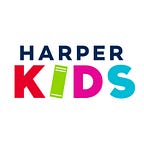For the Love of Books — How Bookstores Give Communities a Place to Gather
by Will Taylor
When I was in tenth grade the tiny suburban mall a mile or so from my house decided to go for an upgrade. Trees and hanging flower baskets were added to the parking lots; the name was changed to Lake Forest Park Towne Centre (very classy); and, best of all, the tangle of drab, non-kid-friendly stores that made up the entire second story was cleared out to make room for a bookstore. One bookstore. One gigantic, sprawling, glorious bookstore.
Its name was Third Place Books, and everyone from our teachers to the local paper gushed about how the name referred to sociologist Ray Oldenberg’s concept of a place, after (1) home, and (2) school (work for the grownups), where we could hang out, relax, and take part in our community. And despite some obligatory teenage grumbling about getting involved in anything so on-the-nose optimistic, the bookstore sucked us all in, and that was exactly what it became.
The idea of third places has fascinated me ever since, especially as a writer. Third places are immensely useful things to have in a story. They provide a rest from the mainstage settings; they let the characters present, discuss, and answer questions about the plot (without seeming too convenient to the reader); and they allow the author to slip in new subplots, questions, and mysteries that need answering.
Hagrid’s Hut, in the Harry Potter series, is a classic example. Just as all Disney villains have sidekicks to explain their plans to so the audience can listen in, Harry and company go to Hagrid’s to catch him up on news and swap theories largely for the reader’s benefit. Over tea and rock cakes, with Fang drooling on everybody’s knees, our heroes and Hagrid literally analyze the plot and its outstanding mysteries. They argue about antagonists’ motivations and intentions. They pick at perceived inconsistencies. They come up with plans. And all of this is fine with the reader because we’re doing it in a third place where the normal rules don’t apply.
There are awesome examples of this technique throughout middle grade lit. Some of my favorites are Calaca Coffee, the shop owned by rad grownup Mrs. Hidalgo in Celia C. Pérez’s The First Rule of Punk; Cô Hạnh’s house (and self-care lessons) in Thannhà Lại’s Listen, Slowly; and amateur detective Ivy’s hidden “Investigatorium” in Caroline Carlson’s The World’s Greatest Detective.
My own book is about linked-up pillow forts, so I tested the theory and picked one right off the bat to be the Hagrid’s Hut. And it works! Especially, I think, because pillow forts already function as kids’ third places in the real world, whether they link up to Alaska like the ones in my book or not.
The moment it goes up, a pillow fort — kid-designed, kid-scaled, and entirely kid-focused–becomes a third place within the home. It’s something entirely new, a room within a room. It changes the whole house just by being there, and it only exists because of the kid/s who created it.
That’s one of the reasons I think pillow forts are also a perfect metaphor for middle grade lit itself. Somewhere around nine or ten years old kids often start choosing books to read on their own — books their parents may not know. This grows more pronounced as they reach eleven and twelve, when peer enthusiasm makes certain books and series absolutely essential reading. Suddenly these kids are experiencing stories and adventures their parents have barely heard of. They know things their parents don’t. They have access to new worlds, new characters, new dangers, and new powers. They begin charting their own course and crafting their own space within the life and home they’ve known. Just like building a pillow fort.
The opening of Third Place Books transformed those late-teen years for me and my friends. We met there after school, spent our weekends combing the shelves for sale-price treasures, and eventually some of us even joined the staff. A few weeks from now my very first book will have a home on one of those shelves, and everything will, for me, come full circle.
Third Place turned up right when I needed it, and hopefully some kid today who needs a third place of their own will find my book there, build themselves a pillow fort, and sit back to analyze the outstanding mysteries of their life, make plans, and dream of all the adventures yet to come.
About the Author:
Will Taylor is a reader, writer, bee fan, and former trapeze flailer. Maggie & Abby’s Neverending Pillow Fort is his debut novel. He lives in the heart of downtown Seattle surrounded by all the seagulls and nearly all the books. When not writing, he can be found selling caramels for a local chocolate company or completely losing his cool when he meets longhaired dachshunds. You can visit him online at www.willtaylorbooks.com.
About the Book:
A sparkling new series about two best friends on the adventure of a lifetime!
